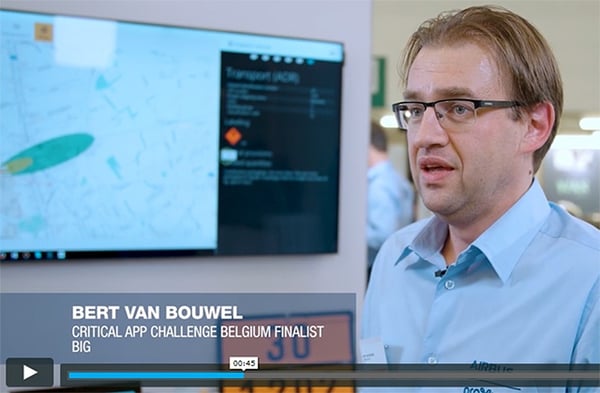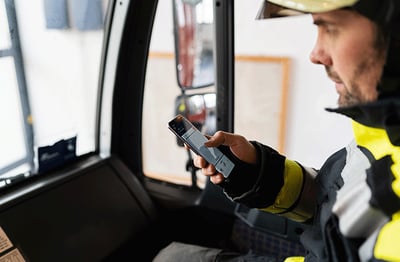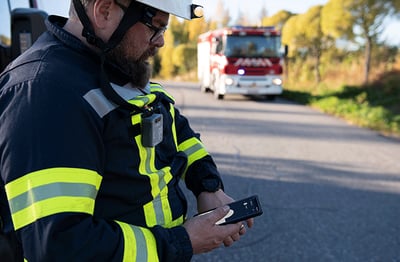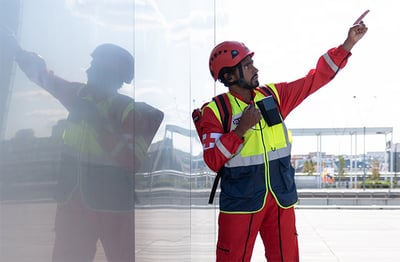Imagine a police officer, or anyone who uses a professional radio. They may look at a smartphone and then at their radio and think: “I could use some of these smart apps in my job. They would make my work a lot easier and more efficient.”
Could it work? Would it be a good idea? How do consumer apps differ from professional apps?
So, are consumer apps suitable for use as such on a professional duty device?
The short answer is no – personnel such as police officers, firefighters and business users need professional versions of smartphone apps, ones that meet the specific demands of mission-critical and business-focused users and devices.
Ideally, professional apps will allow “faster reactions, faster operations” – as one developer from the Airbus apps ecosystem summed up the benefits of their critical communication video app. The interviewees on this video explain the rationale behind developing apps for critical communications markets:
Modern apps are fueling a transformation in critical communications. The Airbus survey into the professional apps market reveals what public safety and other professional organizations need and how apps must evolve to meet the changing demands of users.
There are the five key differences between professional and mainstream apps. Apps designed for professional use must meet the following requirements:
- Tactical control – apps should work from a tactical point of view
- Structured adoption – planning and decision-making centrally
- Professional users value reliability and data confidentiality even more than ease of use
- Apps development needs to carefully consider users’ expectations
- Apps need to be easy to use, otherwise they cannot be used in action.
Tactical control
The first key difference between professional and mainstream apps is related to tactical control.
It is clear that more structure, planning and control should be in place when people use apps in professional operations. But how should professional apps be controlled?
Facing critical situations and with lives at stake, an organisation cannot allow just any app to be downloaded and used - it must have the final say on which apps are used and how. The reasons for this are easy to understand.
What makes things more complicated is that in professional networks, an additional user group of tactical operators is often needed. Tactical operators are the link between the technical network infrastructure team and the users. They define the communication groups and users’ rights, and sometimes the users’ roles as well.
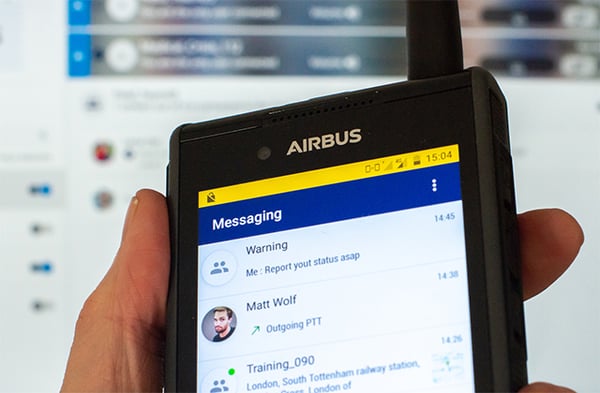
Tactical operators also need to define how apps work from a tactical point of view.
Let’s take an example: a team of three people. They have set up a “talk group” which means that when one of them pushes the PTT key/button, he can instantly speak to the other two.
Now, these three people would also like to use an app to share photos. Ideally, a similar “talk group” should exist for the app. Therefore, the person in charge of tactical operations needs to be able to manage and control the app and related access rights.
This is an important takeaway: Professionals need a way to operate apps tactically – it is not enough for them just to have apps.
Structured adoption of apps
Getting back to apps adoption - how should professional apps be set up on devices?
There is a clear trend identifying a more structured or controlled approach to adopting apps. This is because third party applications are a source of threats. In addition, Android devices are particularly targeted, as they are widely used and easy to develop software for. Mobile malware threats typically involve tricking the user into accepting what the hacker is offering.
Controlled apps adoption is a critical safeguard against these threats.
After all, professional users need to trust that apps are being uploaded to their smart devices safely and securely. Just imagine the chaos that could ensue if spyware got into professional duty devices.
Handpicked related content
Since cyber-criminals are targeting mobile devices and using apps as a way in, how should professionals safeguard against this threat? The blog post “What is the professional approach to smartphone security” explains.
Controlled adoption of apps means that the “app-store” for security professionals must be organised differently from those for mainstream users.
The applications developed by different companies have to be certified to work correctly and safely.
In addition, the devices themselves should have safeguards including application control and digital signature verification for malware protection. In other words, there must be a way to prevent apps upload to duty smartphones if they don’t have a digital signature from the device manufacturer.
Different expectations
Professionals expect different things from those apps they use at work.
Take an example of a push-to-talk application. You have most likely seen PTT applications claiming to “turn your smartphone into a walkie-talkie”. These simple, generic PTT apps tend to promise much - near-instant communications with a push of a button, group calling, and even priorities and emergency calls. Yet, they actually deliver very little, certainly nowhere near what a professional user really needs.
Handpicked related content
There are things that a professional push-to-talk app just has to deliver, but a generic PTT app cannot. This blog post looks at 12 must-haves for a professional PTT app: “How to recognize a professional push-to-talk application”
In addition to different expectations and preferences of application features, there are more general issues at play. The 2020 Airbus survey into the state of the mobile apps market identified three stand-out characteristics that professional users value the most in their apps:
- Security and ownership of data - control in own hands: 71% (highest percentage in survey history)
- High reliability and availability of the service: 63%
- Easy to use: 41%
The first two criteria are completely different from what mass market consumer apps are expected to deliver.
Of course security and reliability do not rule out the third important priority – ease of use. Any tool should be easy to learn to use, and the best professional apps can have the flexibility and user friendliness of the best consumer apps. And of course, it’s an advantage that users might already be familiar with them.
Handpicked related content
According to Airbus' fifth annual mobile apps survey, one of the biggest challenges faced by user organizations is finding apps that solve real problems, while also being secure.
The “5 fascinating ways to use critical professional apps” blog post lists five of the most fascinating examples of LTE and TETRA working with applications.
Professional users’ expectations have an effect on apps development
The smart device and its apps must work together. A police officer at an incident scene must not be compromised because of compatibility issues. Similarly, reliability and security must not be jeopardized.
Developers of course understand this, yet some professional requirements may still come as a bit of a surprise. An app developer participating in an Airbus App Challenge said: “We were actually doing a demo for the oil industry and were told that the particular device we were using is not certified for use in this industry because it could start a fire - that’s something you don’t take into account when you do consumer stuff.”
Watch this video see how an App Challenge went beyond what everyone expected.
Whether it is the oil industry or public safety, security needs to be taken seriously. It has to be the starting point of development when applications are created or further developed based on their consumer market versions.
Easy and simple to use – a critical requirement
When it comes to apps, there are differences even between the needs of different professionals. A public safety user sometimes works in a very stressful situation and communication tools must be extremely easy and simple to use correctly – often with gloves on, and sometimes without looking.
Although users in an industry environment may be expected to have the time to use more complicated apps, they will also appreciate apps that will be easy to use in low-light conditions and in moving vehicles.
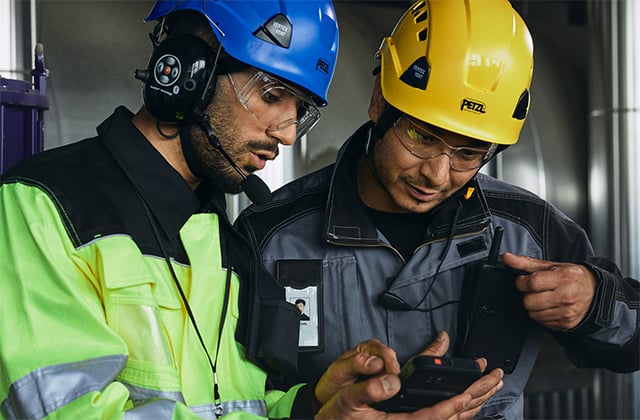
Apps that make a difference
One Airbus App Challenge participant explained that developing apps for critical communication markets “has opened our eyes to see that good software can change the world – by helping public safety officers to save lives and work more efficiently every day”.
Watch this video for more comments from app developers.
See a list of different apps developed for the professional Tactilon Dabat hybrid device and available in the Airbus apps ecosystem: take a look at the Apps catalogue.
And if you cannot find apps that should exist, why not join this ecosystem for those who develop professional apps? Maybe you could develop an app that makes a difference!
What does the future hold for professional apps?
It will be fascinating to see what 5G will bring to the industrial environment – for steering and controlling sensors, actuators and for intelligent and autonomous machinery. And 5G may mean a whole new world of possibilities for public safety LTE.
What do people want from the apps that they use professionally? What are the characteristics they value in their apps provider? Download the 2020 report on the survey into the state of professional apps: "Fingertip access to the latest trends in mobile apps"
Or go to the Professional app trends page to see or download all five reports.

